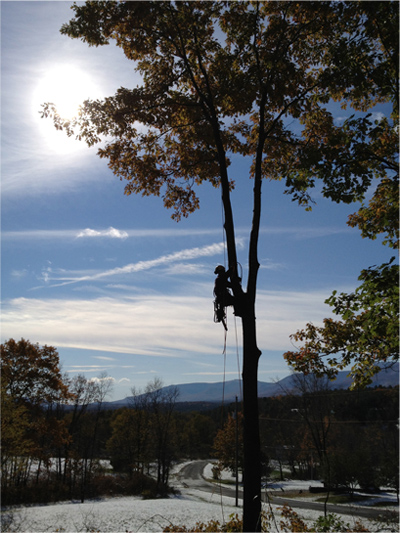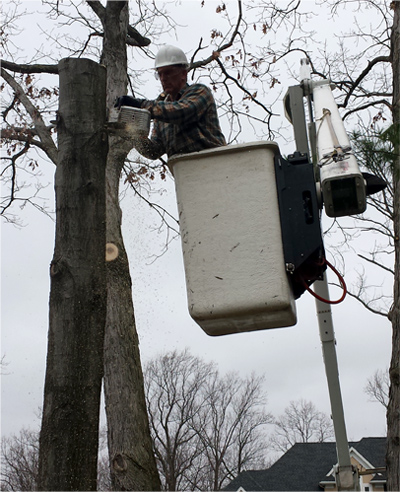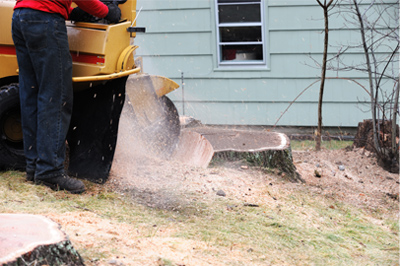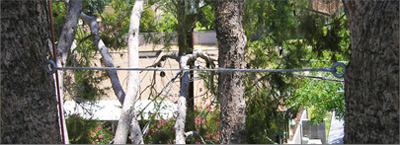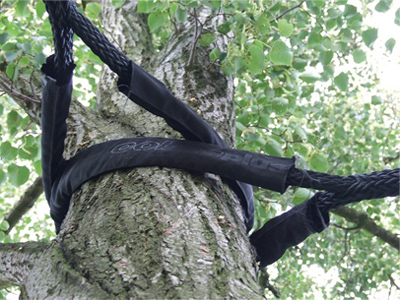View Trimming
Trimming trees for a view is the art of bringing “the picture,” or the scenery that is being obscured by tree branches, into harmony with the environment. For houses or offices with a view of beautiful scenery, this means allowing the trees to “frame” the view. Limbs and leaves can be cut in such a way that the tree remains healthy and lives healthily, but so that a view is opened up.
View work focuses on the view, so trees aren’t trimmed within any particular school of trimming. Instead, care should be taken to ensure that trees aren’t injured by excessive cutting. At times a tree must be removed to affect the view. Take a look from your deck or your bedroom window some day. If you live on high ground, or on a steep incline, you might have the opportunity to cut yourself a magnificent view without cutting down a single tree. Views from a house can raise its value and/or make dawn or dusk a really spectacular show.
Tree Removal
At Green Leaf Tree we are different than your average “tree service” company. We are not “tree cutters”, we are trained Arborists and we value trees. We look at tree removal as a last resort solution to a problem. There are times we’re able to arrive at a solution to your problems with some of the other services we offer, such as pruning, cabling and bracing, or plant health care. Unfortunately, there are situations where the only solution is for the tree to come down.
When that’s the case, we carefully choose the appropriate combination of techniques to get your tree on the ground quickly and safely.
This may involve the use of a bucket truck, a crane, or progressive climbing techniques and technical rigging. Because we are equipped with a 70′ bucket truck “the largest in the industry”, we are able to offer very competitive pricing. We also have on staff a highly qualified crane operator, crane removal is becoming the favored method for tree removal for residential trees, and our crew is very comfortable and experience with this method of tree removal.
Tree removal is a very involved and potentially dangerous process, requiring a combination of skill, sound judgment, and quality equipment to do safely, efficiently, and with as little impact to your property as you desire.
When you’re in the position of having to remove a tree, don’t make the mistake of hiring amateurs, or fall victim to the allure of a price that seems too good to be true. Hire a Professional to do the job right!
Stump Removal
Green Leaf Tree offers a stump removal service for our customers. We would be glad to give an estimate for removing your stump(s) regardless if our company performed the original work. The method we primarily use is grinding the stump below surface with a stump grinder. Depending on your situation and liking grass can be planted and in a few short weeks you will be able to cut your grass with ease.
Cabling
Sometimes trees can benefit from structural support. In cases where a tree is well suited to an area, or is planted by an ancestor, or just well-loved, cabling can hold a tree together and prevent the loss of a limb or splitting of a double trunk. If you think a tree may need cabling, call Green Leaf Tree for a consultation with our arborist.
If you decide to install one or more cables, make sure that they are professionally installed. Sometimes the best strategy is to lightly thin the tree’s crown in conjunction with cabling. There are presently two kinds of available cables: Static steel cables and Dynamic synthetic cables.
Both types of cables are used to support weak unions in the tree, almost always in the case of co-dominant stems (“double” trees) or a cracked branch union. The cable should be installed about 2/3 of the distance from the weak union to the end of the stem. The design and installation of both are described below.
Steel Cables
These high-strength steel wires, usually between 1/8″ to 3/8″ in diameter, are attached with hardware into the trunk of the tree.
For small stems a J-lag screw should be installed to the full length of the threads. Any large branches or trunks should have drop-forged eye bolts extending through them and held with a washer and nut on the back side. Cables should be swaged or dead-ended to a thimble that goes around the J-lag or eye bolt. The thimble prevents severe bending of the wire. Cables are installed with enough tension to remove all slack from the cable.
There are sometimes complications arising from steel cabling. Because trees naturally add wood to their circumference every year, they annually strengthen themselves to compensate for co-dominant stems, large limbs or other imbalances. They strengthen themselves by adding wood where it is most needed, reducing the stress in that area. Known as the axiom of uniform stress, this follows from the observation that trees always have much thicker growth rings in areas of high stress. Adding a cable can help support the tree, but may result in less wood formation to support that part of the tree that has been cabled. Thus, steel cables once installed must be maintained and replaced when necessary.
In general, steel cables are recommended where the union is prone to a sudden failure, such as in very brittle trees, or in the case of partially cracked unions, or unions that have a well-defined plane of crack propagation.
Synthetic Cables
Synthetic cables are made of high strength rope with some shock-absorbing properties and attached around the trunks instead of through them. They vary in diameter from 3/8″ to ¾” in diameter.
The cables are attached loosely and only become tight when the tree is deformed due to load. At the point where the cables go around the trunk, a wide insert spreads the load to prevent the rope from damaging the bark. The cables are self-adjusting and become larger as the tree gets bigger to prevent girdling.
Synthetic cables are gaining in popularity due to their ability to allow the tree to grow naturally, yet still aid in an emergency. In general synthetic cables are recommended where the failure between the stems is likely to be more gradual, such as unions with an obvious cracking plane on only one side of the union, or in trees known for their toughness (in the engineering sense, that is!), or trees with U-shaped unions. A U-shaped union is less prone to failure because there is no one place for stress to concentrate.
